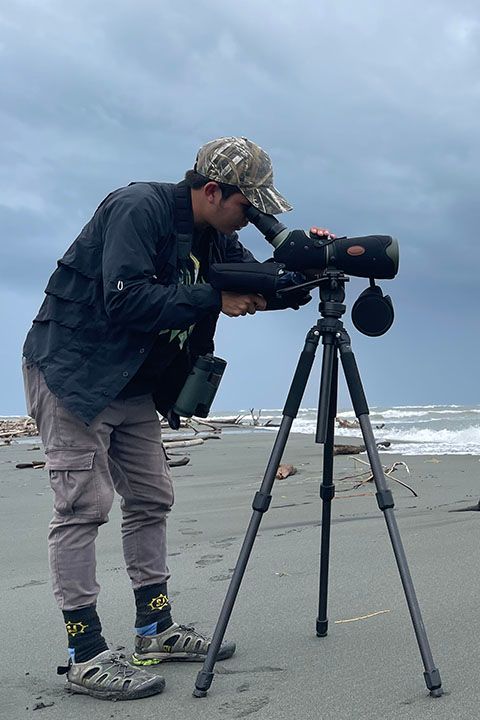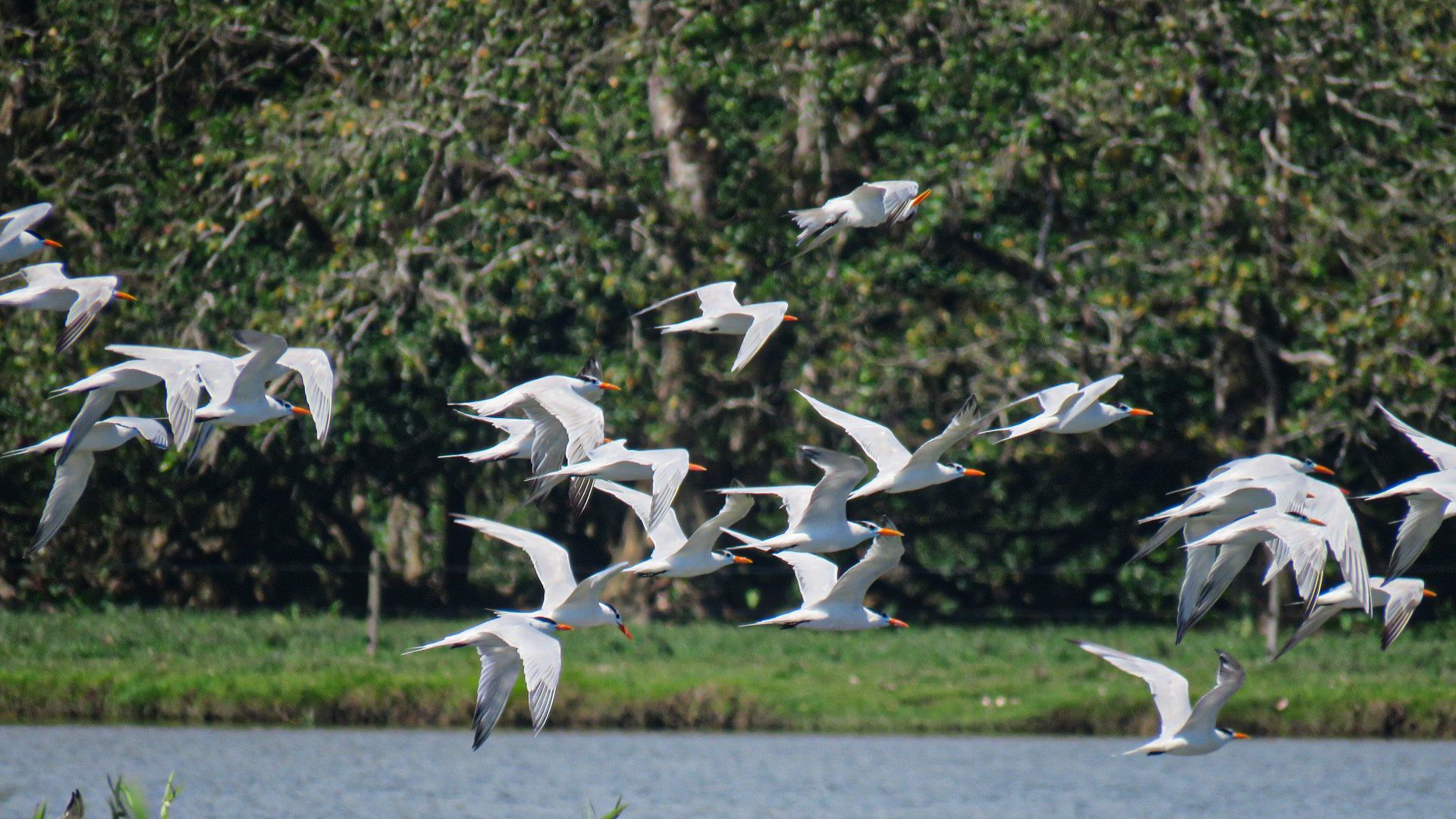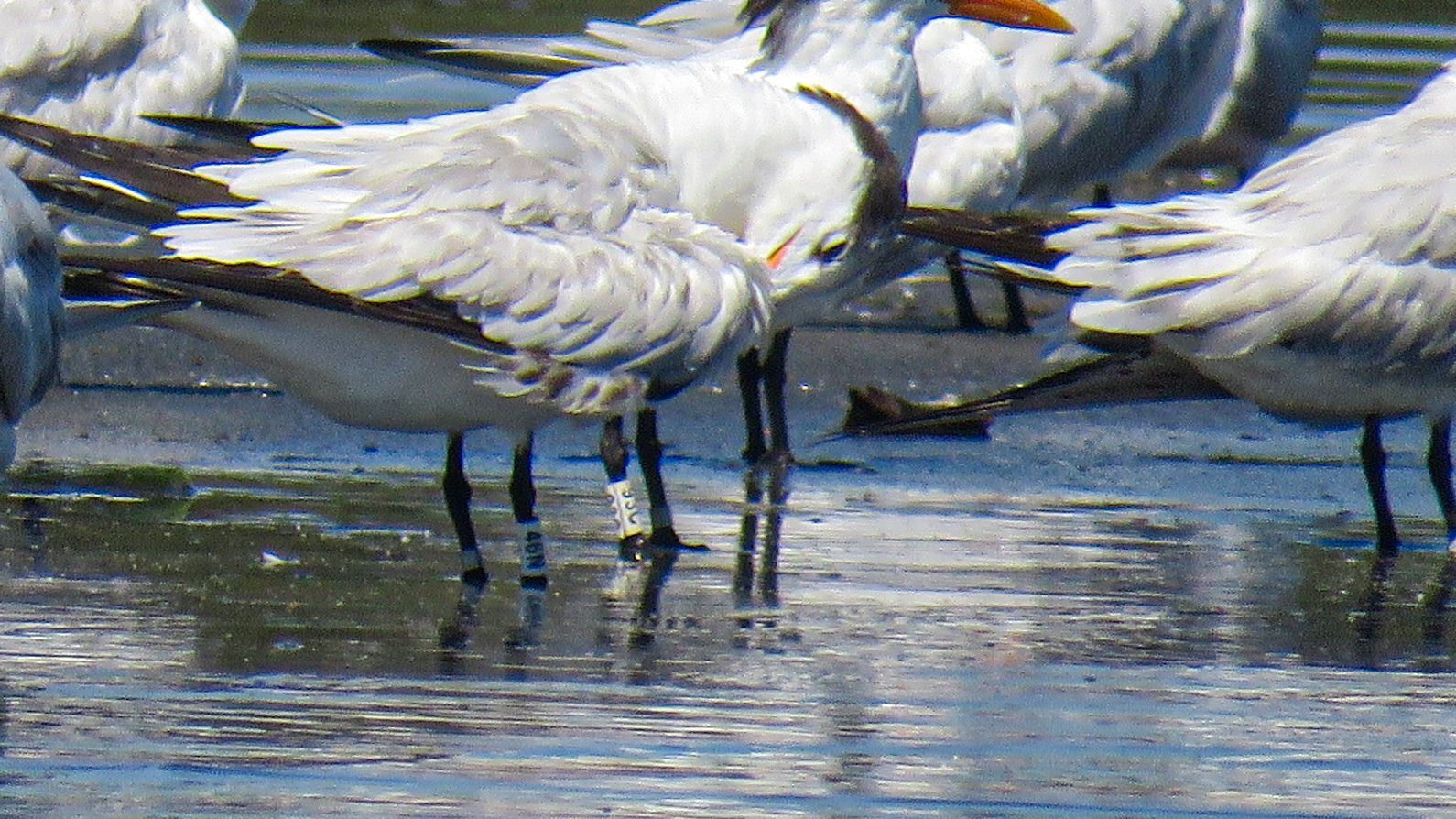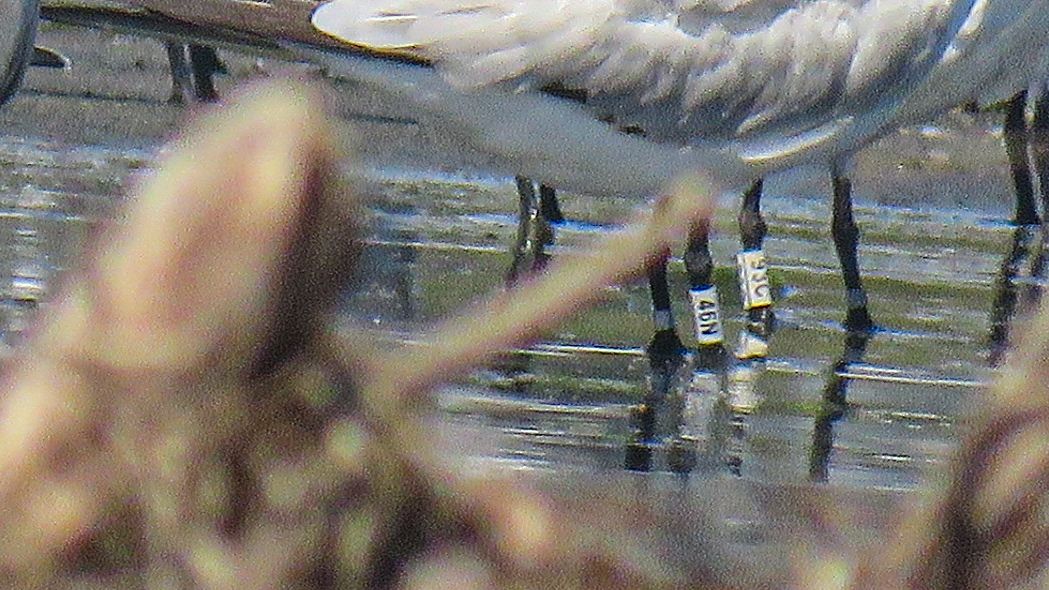Published March-17-2022
Local Bocas Naturalist Guide Encounters Banded Royal Terns
Records of Royal Terns reported with bands in Central America are very scarce. Still, as the number of birders and the curiosity to observe details grows, this could increase annual records in Central America.

Roger Morales

The North American Bird Banding Program was created to study bird movements, survival, and behavior. Since 1904, 60 million birds have been banded in North America, representing hundreds of species. More than 4 million bands have been recovered. The program is under the U.S. Geological Survey (USGS) and the Canadian Wildlife Service. Yet, the most crucial collaborator in the chain is the curious observer (located anywhere in the world), who in the field detects a banded bird and makes the respective report on the web: www.reportband.gov.
The largest seabird colony in Virginia, USA, is a small island dominated by tens of thousands of nesting Royal Terns each spring. It is home to one of the banding sites researchers use to discover where these terns travel in winter.
Royal terns are an example of how migratory birds connect us all to remote places. Yet the habitats on which Royal Terns and other seabirds depend are threatened by numerous factors, including climate change, human disturbance, and the proliferation of predators.
Records of Royal Terns reported with bands in Central America are very scarce. Still, as the number of birders and the curiosity to observe details grows, this could increase annual records in Central America.
While on several birding tours along the western Caribbean slope offered through Tranquilo Bay Eco-Adventure Lodge, that included the San San-Pond Sak Wetland (International Ramsar Site 611), one of our guides, Roger Morales, has been on the trail of several individuals banded from Near Hampton, Hampton City, Virginia, USA (36°59’30.0 “N 76°18’30.0 “W), by Dr. James D. Fraser.

Roger’s first encounter with a banded bird was on December 4, 2021, in the vicinity of the Changuinola River with a Royal Tern who had a white band and black numbers and code 349. Then the next day, he finds a group of Royal Terns. One of those individuals had a band with code 93C. In Roger’s search to know where these terns came from, he finds www.reportband.gov. He reports his sightings. These reports become vital records for scientific studies to learn the winter movements and distance traveled as part of their yearly migratory journey.
Roger’s next observation happened on December 12, 2021, of an individual with code 46N. The first two observed were banded in July 2020; perhaps it was their first or second migratory journey through Central America, whereas the last observed had been tagged in July 2021, which meant its first trip to the Central American Caribbean.

Three months following the first observations, Roger finds a large group of Royal Terns on another Tranquilo Bay tour in the Changuinola River. This group included two banded individuals. And as a more incredible surprise, he detects that they were two of those he previously found: codes 93C and 46N. Maybe these individuals spent their winter on the coasts of Bocas del Toro.
During the following weeks, on March 11, we found bird 93C again in the same site of the Changuinola River. On March 13, in the Sixaola River (within Ramsar site 611), we found bird 46N next to a new marked tern with code 0M1. The distance between each reporting site is less than 20 km in a straight line.
This continues to be exciting for our visitors. We enjoy our ability to contribute to the knowledge of these species throughout. Learning about their life history and how these terns have managed to travel approximately 3,125 km straight from their nesting or hatching site to the coasts of Bocas del Toro.
We will continue contributing citizen science data to support researchers and the marine migrant species that visit Central America year after year.
